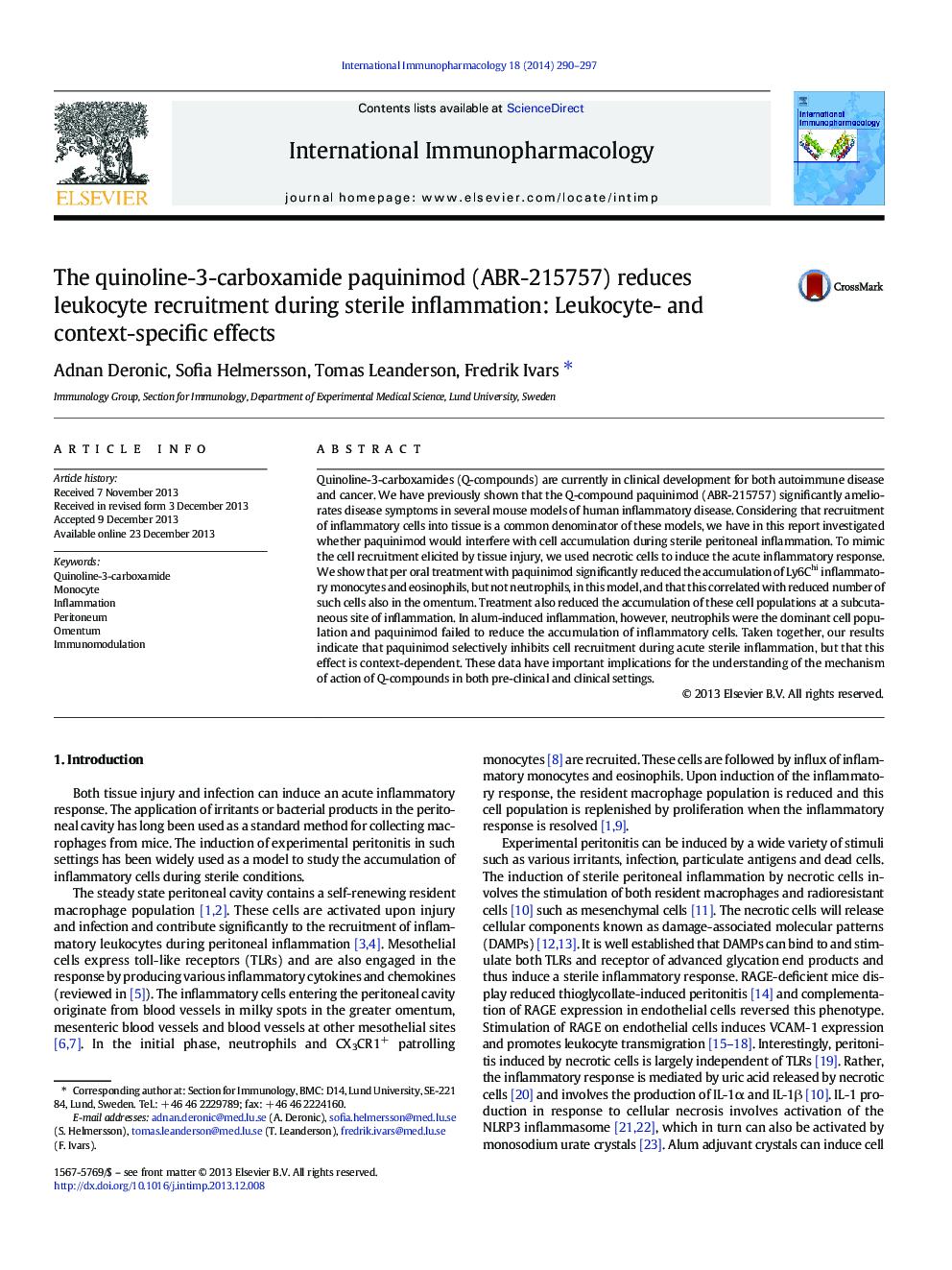| کد مقاله | کد نشریه | سال انتشار | مقاله انگلیسی | نسخه تمام متن |
|---|---|---|---|---|
| 5832886 | 1122612 | 2014 | 8 صفحه PDF | دانلود رایگان |
عنوان انگلیسی مقاله ISI
The quinoline-3-carboxamide paquinimod (ABR-215757) reduces leukocyte recruitment during sterile inflammation: Leukocyte- and context-specific effects
دانلود مقاله + سفارش ترجمه
دانلود مقاله ISI انگلیسی
رایگان برای ایرانیان
کلمات کلیدی
موضوعات مرتبط
علوم زیستی و بیوفناوری
ایمنی شناسی و میکروب شناسی
ایمونولوژی
پیش نمایش صفحه اول مقاله

چکیده انگلیسی
Quinoline-3-carboxamides (Q-compounds) are currently in clinical development for both autoimmune disease and cancer. We have previously shown that the Q-compound paquinimod (ABR-215757) significantly ameliorates disease symptoms in several mouse models of human inflammatory disease. Considering that recruitment of inflammatory cells into tissue is a common denominator of these models, we have in this report investigated whether paquinimod would interfere with cell accumulation during sterile peritoneal inflammation. To mimic the cell recruitment elicited by tissue injury, we used necrotic cells to induce the acute inflammatory response. We show that per oral treatment with paquinimod significantly reduced the accumulation of Ly6Chi inflammatory monocytes and eosinophils, but not neutrophils, in this model, and that this correlated with reduced number of such cells also in the omentum. Treatment also reduced the accumulation of these cell populations at a subcutaneous site of inflammation. In alum-induced inflammation, however, neutrophils were the dominant cell population and paquinimod failed to reduce the accumulation of inflammatory cells. Taken together, our results indicate that paquinimod selectively inhibits cell recruitment during acute sterile inflammation, but that this effect is context-dependent. These data have important implications for the understanding of the mechanism of action of Q-compounds in both pre-clinical and clinical settings.
ناشر
Database: Elsevier - ScienceDirect (ساینس دایرکت)
Journal: International Immunopharmacology - Volume 18, Issue 2, February 2014, Pages 290-297
Journal: International Immunopharmacology - Volume 18, Issue 2, February 2014, Pages 290-297
نویسندگان
Adnan Deronic, Sofia Helmersson, Tomas Leanderson, Fredrik Ivars,